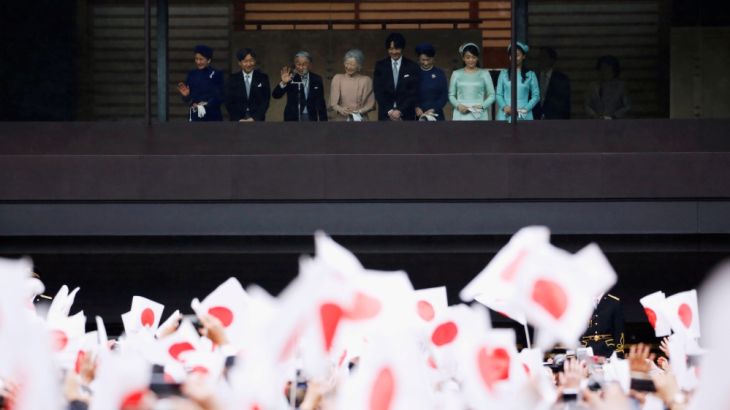Japan Emperor Akihito’s abdication: What you need to know
Japan’s 85-year-old Emperor Akihito will end his three-decade reign on Tuesday when he abdicates to his son Naruhito.

Japan’s 85-year-old Emperor Akihito prayed to a Shinto sun goddess, starting a day of ceremonies to mark the end of a three-decade reign in which he sought to ease painful memories of World War II and bring the monarchy closer to people.
Akihito, 85, was the first monarch to take the Chrysanthemum Throne under a post-war constitution that defines the emperor as a symbol of the people without political power.
Akihito will end his three-decade reign on Tuesday when he abdicates to his son Crown Prince Naruhito.
Only part of the ritual was released to the public.
In a palace ritual later in the day, he will announce his retirement before other members of the royal family and top government officials.
He is the first emperor to abdicate in 200 years. The last abdication by a Japanese monarch was in 1817.
Naruhito will become emperor on Wednesday, but his formal enthronement will take place at a more elaborate ceremony in October.
Why is Akihito abdicating?
In August 2016, Akihito, citing concerns about his age and declining health, expressed his wish to abdicate while he was still well and capable.
As a constitutionally defined symbol with no political power Akihito sought understanding in a message to his people, and immediately won overwhelming public support, paving the way for the government’s approval.
With Japan’s Imperial House Law lacking a provision on abdication by a reigning emperor and virtually allowing only posthumous succession, the government enacted a one-time law to allow Akihito’s abdication.
Who is next in line and who is left?
Naruhito is the elder of Akihito’s two sons. A musician and avid hiker, 59-year-old Naruhito spent two years at Oxford and wrote a paper on the 18th century Thames River transport systems after studying history at Gakushuin University, a school formerly for aristocrats.
His wife, Masako, a Harvard-educated former diplomat, is recovering from stress-induced conditions she developed after giving birth to their daughter Aiko amid pressure to produce a boy.
Aiko, 17, is barred from inheriting under Japan’s male-only succession law, and the line goes to Naruhito’s brother, Fumihito, better known by his childhood title, Akishino.
Fumihito’s son, Hisahito, 12, would be next.
Discussions on changing the law to allow female succession quickly ended with Hisahito’s birth, but they are expected to resume, with Akihito’s abdication raising concerns about the family’s future.
What are the procedures to abdicate?
Akihito will announce his abdication in a palace ritual on Tuesday evening, but technically he remains the emperor until midnight, when his era of Heisei, or “achieving peace” ends and Naruhito takes over with his Reiwa era of “beautiful harmony” beginning.
On Wednesday morning, Naruhito, in his first ritual as emperor, receives the imperial regalia, including the sword and the jewel, as proof of his ascension to the throne.
Aside from government officials, only adult male royals are allowed to attend, a tradition the government has kept despite criticisms raised by the public.
What will Akihito do after abdication?
Akihito will hold a new title, Emperor Emeritus, but he will be fully retired from official duties and will no longer sign documents, receive foreign dignitaries, attend government events or perform palace rituals.
He will not even attend his son’s succession rituals and will largely recede from public appearances.
His activities will be strictly private so as not to interfere with the serving emperor.
After abdication Akihito and Michiko will move to a temporary royal residence before eventually switching places with Naruhito after refurbishments at each place.